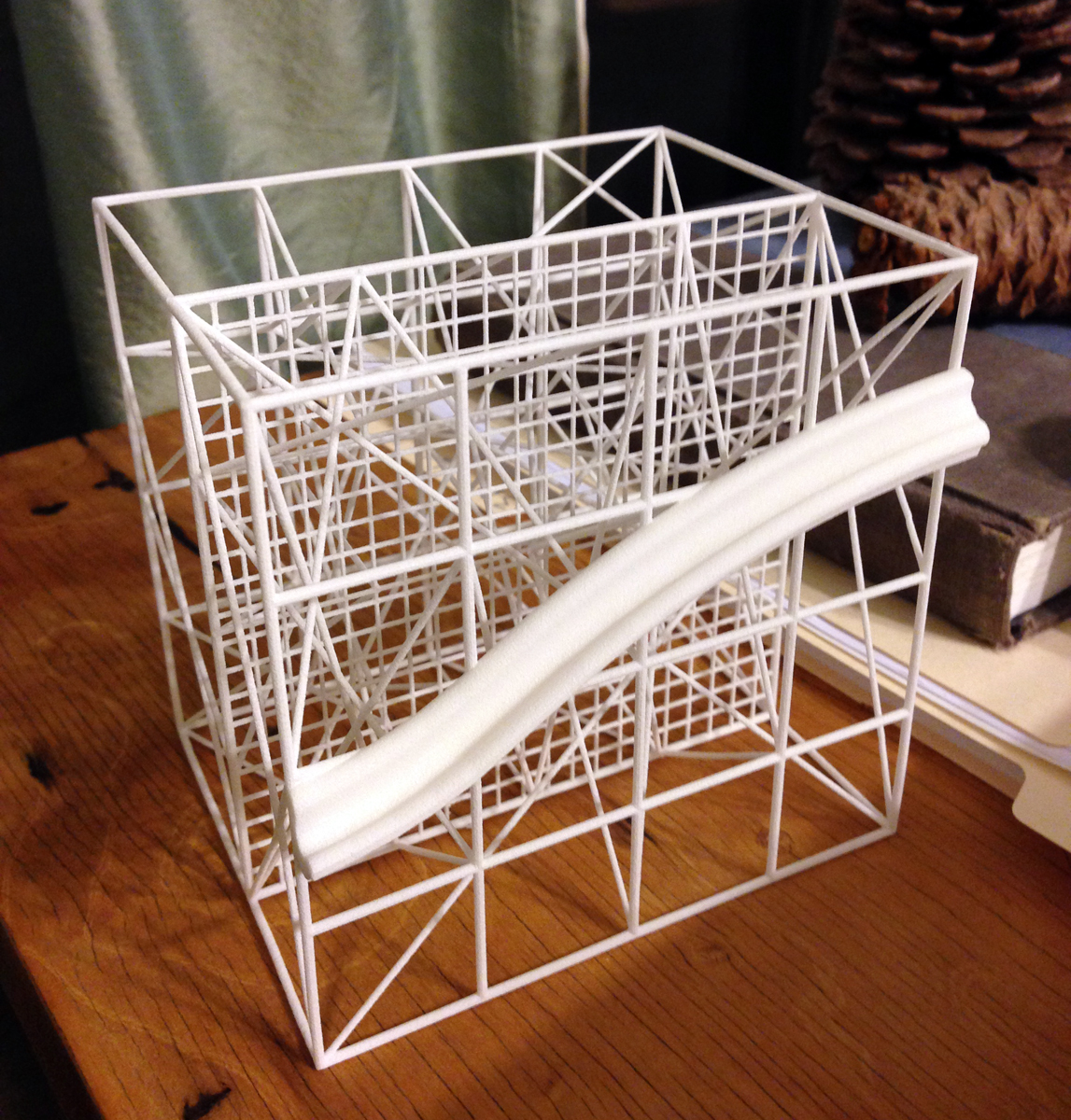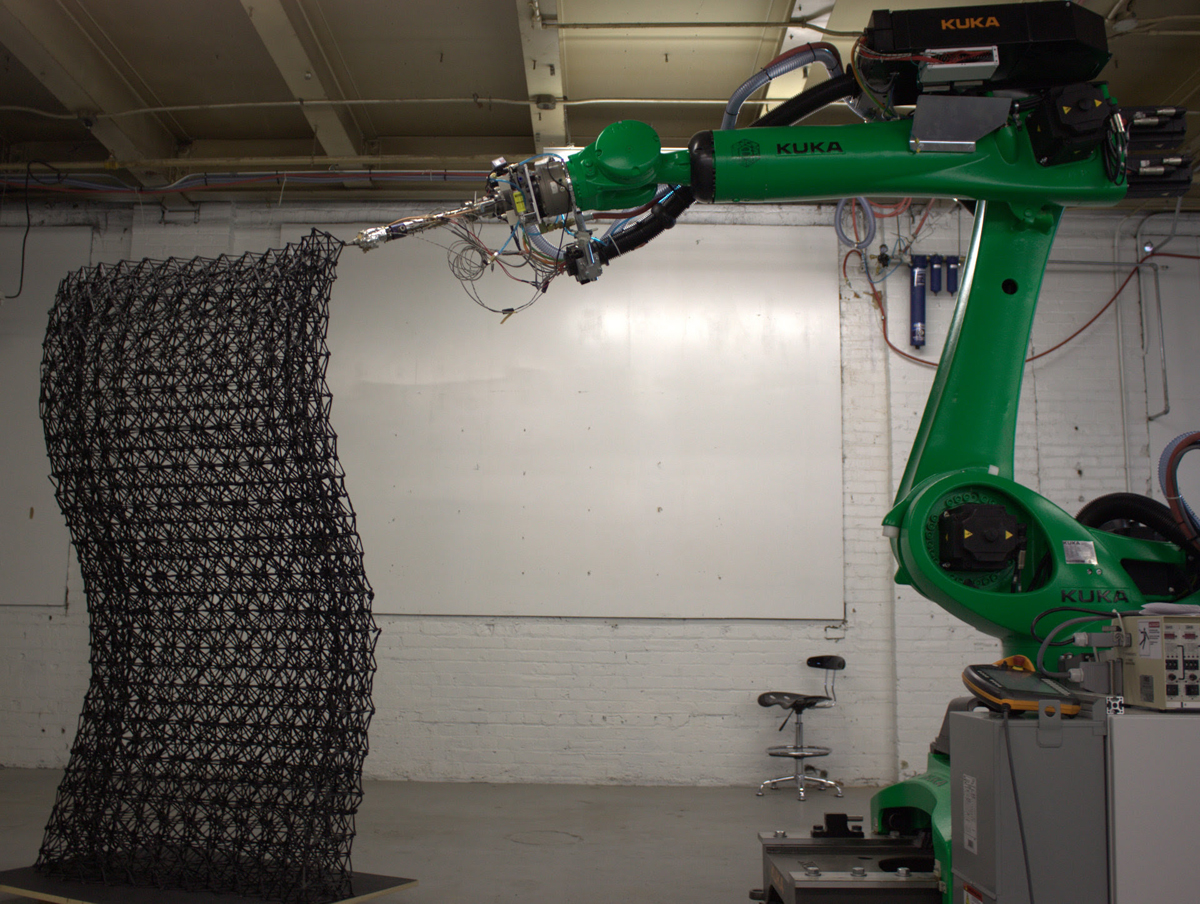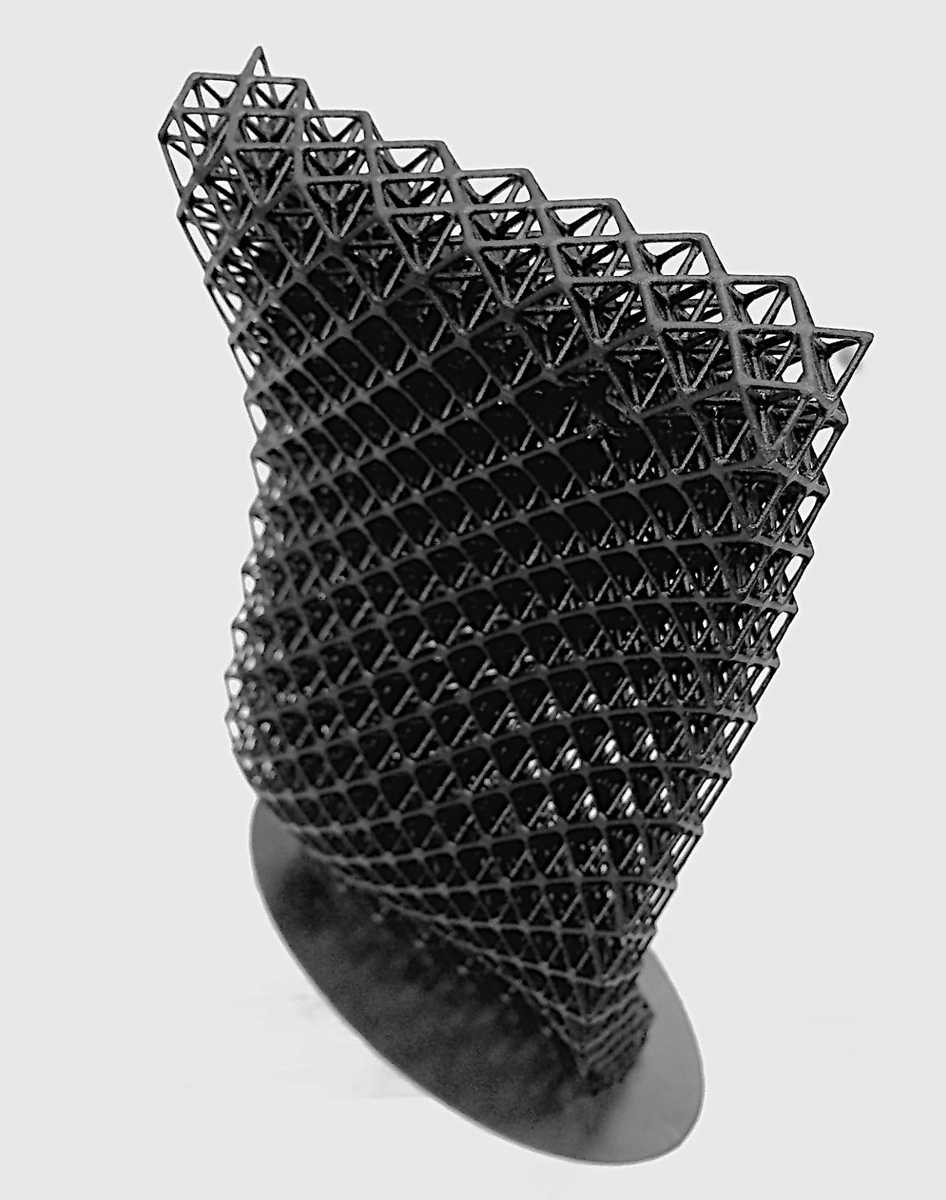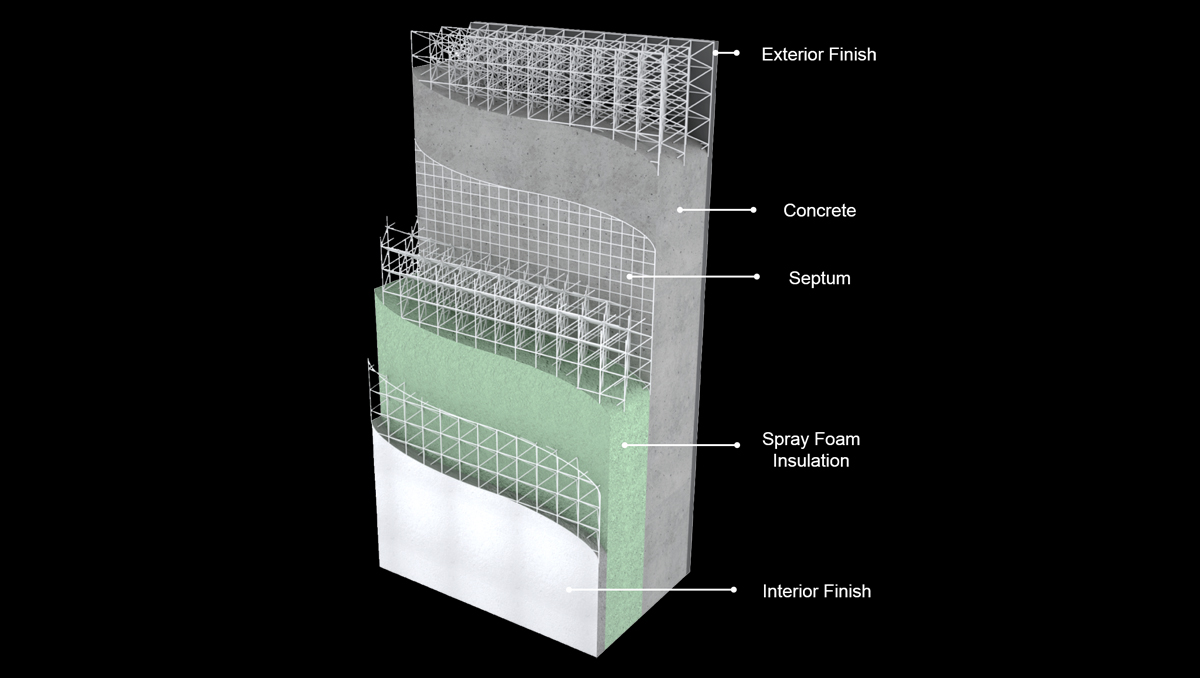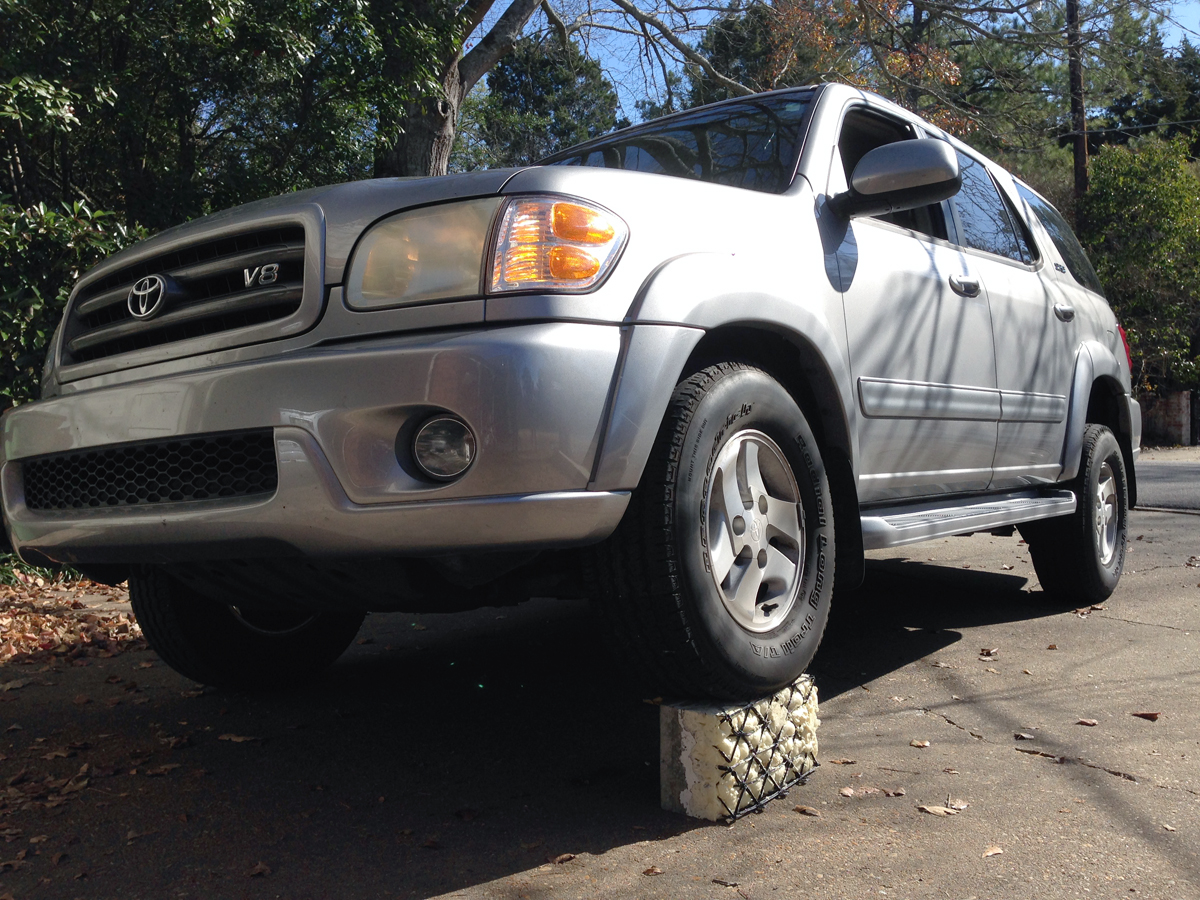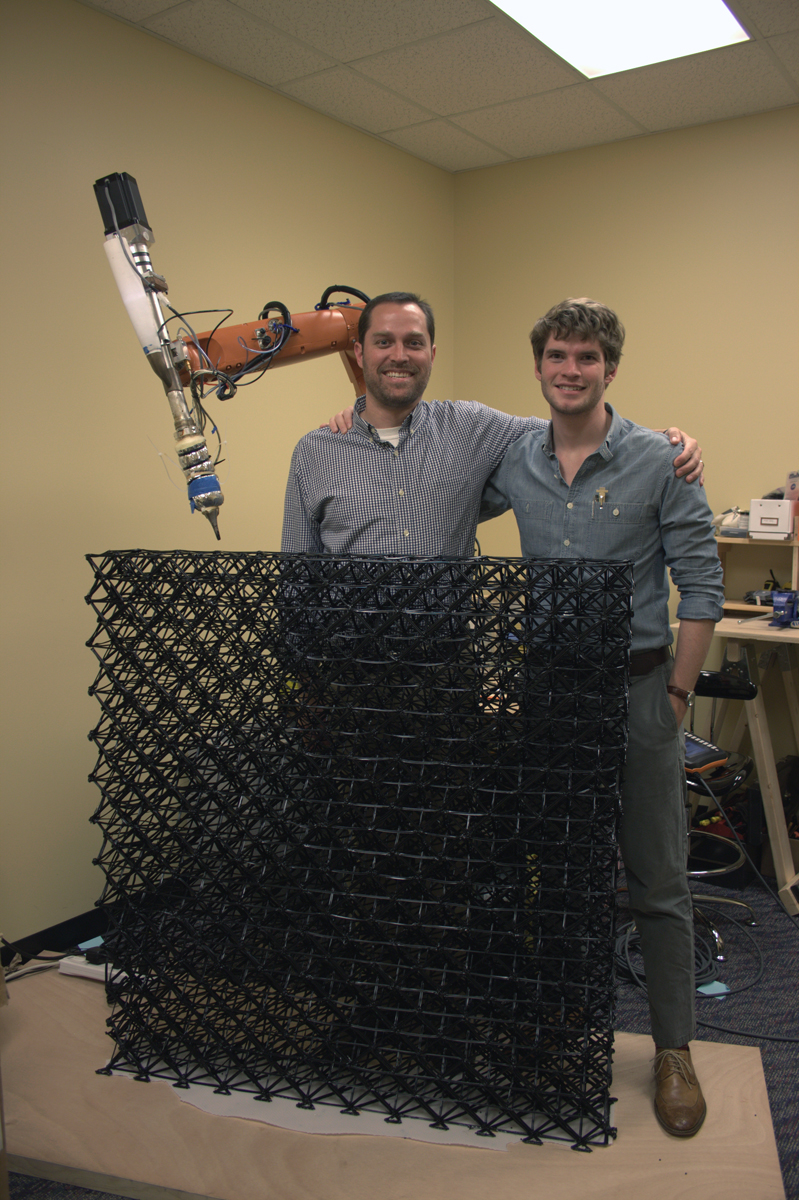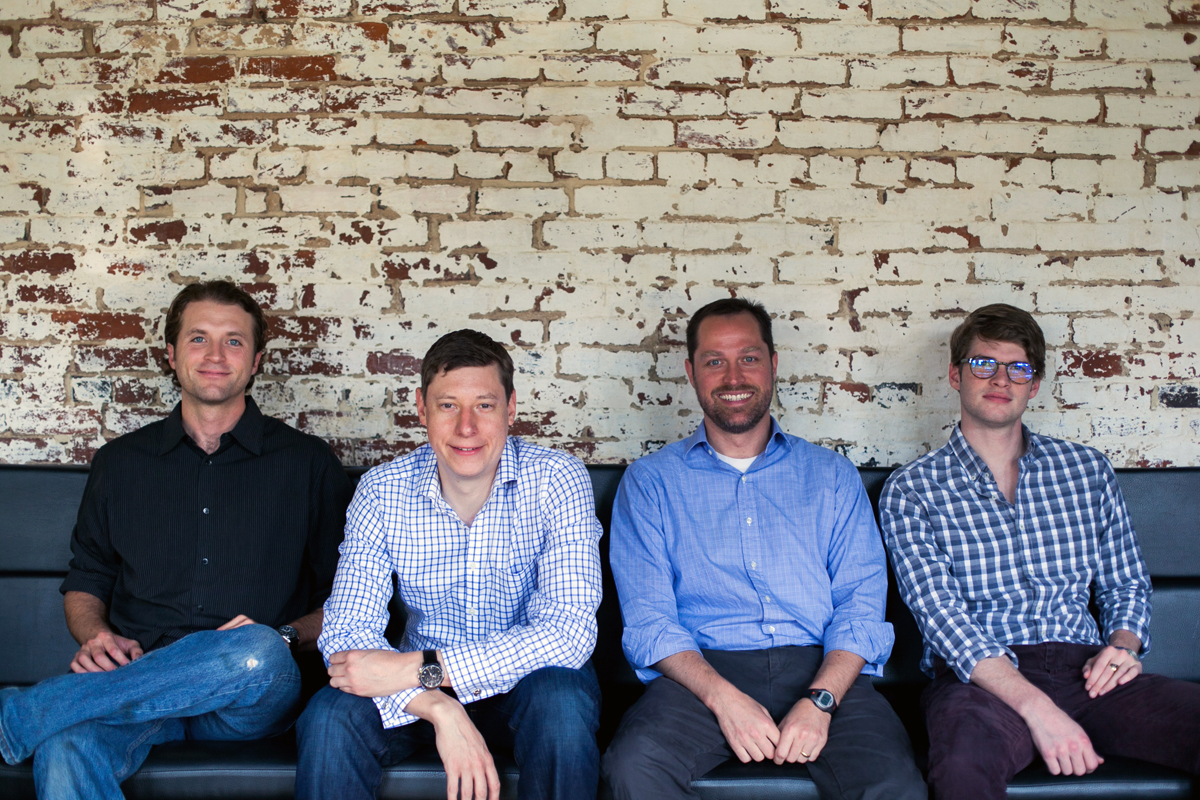“Did you know,” Platt Boyd asks me, “that the way we construct buildings hasn’t really changed for 10,000 years? The oldest extant structures are about 10,000 years old and those are post and beam. And we’ve been doing it that way for a long, long time, with some deviation, but not a lot. But they don’t really translate how structures are formed in the natural world.”
I met Platt last year when I attended a pitch contest called Demo Day, hosted by tech incubator GIGTANK, in Chattanooga, Tennessee. At the time, he couldn’t tell me what he was working on, but, based on his background as a partner at Seay, Seay & Litchfield Architects, I knew it had to involve 3D printing and construction. Unfortunately for me, his lips were sealed. It turns out that, a year ago, what Platt was working on was this:
It might not look like much, but this scale model, designed by the architect-turned-inventor and sintered by Shapeways, was enough for Platt to raise $944,000 and launch Branch Technology because what his small nylon print represented was a complete disruption to the $8.5 trillion global construction industry.
Since that humble prototype a year ago, Platt’s project has evolved immensely. Through the firm’s participation in GIGTANK, Branch Technology has progressed from Platt’s original nylon model to a medium-scale proof-of-concept to the actual 3D printing of large wall structures on the floor at GIGTANK Demo Day, in which the incubator’s startups pitch their businesses to investors in the hopes of obtaining capital (In fact, you can watch Demo Day pitches live starting at 6 pm EST). Currently, Branch Technology’s customized Kuka robotic arm is sliding on a 10-meter-long rail system to 3D print ABS walls for the company’s own exhibition booth. At 25 feet wide by 58 feet long, this is the world’s largest freeform 3D printer.
Previous to establishing Branch Technology, Platt had worked as an architect in Montgomery, Alabama for fifteen years, becoming a partner with plans of eventually retiring there. As happy as he was working on projects that would continue this 10,000-year-old tradition, he had longed for a more natural form of building, even starting a portfolio of images that he called his “Beautiful and Amazing Collection”. He says, “It’s made up of things you see in the natural world and how those things are formed. Everything from little tiny sea creatures to the crystalline structure of minerals and the patterns of formation you see in nature.”

Those images and a desire to manifest similarly organic structures in the real world subtly affected his trajectory. Platt tells me, “And I’d been collecting that for a long time. That collection sort of infused my brain and, eventually, began to inform how [Branch Technology would come about].” It wasn’t until one Saturday in July, 2013, that he began to realize just how. Platt found himself sipping an energy drink and looking through house printing articles. “There was Contour Crafting, Enrico Dini from D-Shape, DUS Architects from the Netherlands. And they were doing printing in single materials, in layered build up.” But Platt points out, “No modern building is made that way. It’s always multiple systems coming together to form a composite assembly.
As a result, Platt was inspired to take a completely different approach. See, Platt’s Cellular Fabrication™ technology isn’t like the enormous gantry-style house printers being pursued by Dini, Khoshnevis, and a number of others. And for that reason, C-Fab™ may be able to be integrated into modern construction more quickly and more affordably than these large-scale 3D printing processes. While these endeavors are focused on “maximizing the use of 3D printing in construction,” Platt tells me, his firm is looking to “minimize the 3D printing aspect of his technology,” using additive manufacturing only where necessary. Rather than 3D print entire buildings, Branch Technology, is only 3D printing walls – and not even complete walls, at that.
Though the structures that Branch Technology is printing at GIGTANK are impressive, this would only be the beginning for such structures. And this is where 3D printing might most be used to disrupt the larger construction paradigm. What Branch Technology envisions is 3D printing the matrices for a building’s walls with optimized geometries. These 3D printed lattices would then be outfitted with low-cost, traditional construction materials.
On the portion of the structure that would act as an interior wall, insulating foam would be sprayed, as occurs in standard construction practices, and coated with typical drywall. On the side acting as the exterior of the building, concrete would be applied, before external elements, like brick, stucco, or any other traditional material, are added. In other words, 3D printing is only implemented for the original support structure, while ordinary techniques are used for everything else.
Instead of the gantry-style machines he’d seen that night in 2013, the way he approached wall printing was inspired by something he saw on an assembly line. “I visited a factory about eight years previous and seen how industrial robots were doing things that I couldn’t believe. They were caulking a car and, as the car was going down the assembly line, the robot arm was moving in this very complex pattern. And, as it was moving, it was tracking the motion of this car and it blew me away.”
“So, that night, after looking at these house printing projects, I started a sketch for a wall and how that might be made. I started writing down all of the things you might need to make this happen,” He recalls, “And I went to a conference, the Inside 3D Printing event in San Jose in September of 2013, to see if anyone was doing anything like this. 3D Systems and Stratasys and all of the big boys were out there, but I didn’t see anything at that conference that was like [what I was thinking of doing]. So, ‘That’s open door number one.’ Open door number two was exploring the patent landscape and approaching angel investors.”
Minimal as 3D printing might be in the C-Fab process, its impact is huge. Those familiar with the technology know that additive manufacturing frees designers to explore intricate and complex geometries in CAD before printing them into the physical world. Branch Technology’s system, then, would allow architects to produce whatever shapes they can imagine, assembling each individual wall panel into the larger building’s form.
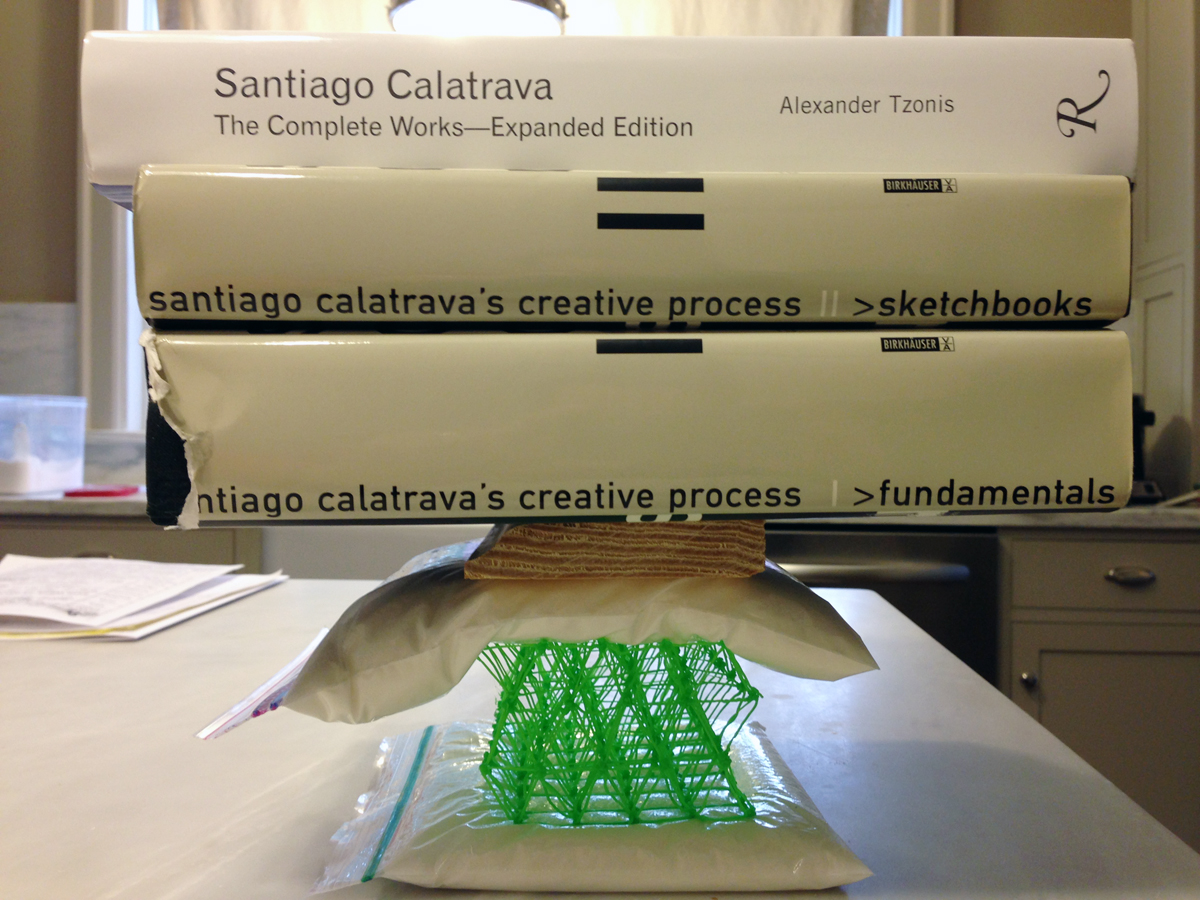
This is then amplified significantly when constructing large-scale components, with Branch Technology determining that a single plastic wall coated with spray foam was 1.31 times stronger than an equivalent area of wood stud wall. And, once the wall had concrete added to it, they found that it had the same strength as a traditional concrete wall, 3,000+ pounds per square inch.
At the same time, these walls are incredibly light. So light, in fact, that Platt tells me that two people can carry a single wall piece, without concrete, by hand. Still, a 1.5 pound plastic wall was able to support 1500 pounds, while a 2.5 pound plastic wall with spray foam was able to support 2980 pounds. And, because the walls lack the same inner make-up as their ordinary counterparts – such as wood stud or concrete walls – they waste a lot less material.
To pull off their prototypes, Branch Technology had some important partners, specifically Kuka Robotics and Oak Ridge National Laboratory. Kuka was able to provide the startup with its first robotic arm, the Kuka Agilus, a tabletop device that the team outfitted with their extrusion system. This iteration, which had a 3.6’ reach, was able to 3D print walls up to 4’ tall X 4’ wide X 3’ deep in size.
And, once they were able to pull that off, Branch purchased an even larger machine: the KR 90. Branch Technology then customized the device by building a 10 meter long track on which the arm can 3D print structures with dimensions of 25 feet wide by 58 feet long, giving it a build envelope of 8,772 cubic ft, or 324 cubic meters.
Anyone who’s been following the story of Local Motors and their 3D printed cars will immediately recognize ORNL as one of the major players behind their car manufacturing technology. The national lab was instrumental in co-developing Cincinnati Inc’s Big Area Additive Manufacturing (BAAM) machine used to, first, 3D print the layers of the auto’s chassis and then mill down the car for a more refined look. ORNL also played a part in creating the ABS-carbon fiber composite out of which the Strati car was made.
ORNL happily provided Branch Technology with their composite, so that the firm might build its prints from a lightweight, but sound material. Unfortunately, the 20% carbon fiber prints made by Branch were far too brittle and the team had to bring the composition ratio down to 5% carbon fiber, 95% ABS plastic, but the team is experimenting with other material mixes also, including mixes of glass fiber and fire retardants.
Now that Branch has their industrial robotic arm manufacturing these large-scale parts, the goal is to get to the point where they can build them for customers, eventually constructing mass customized pieces that will be assembled into whole buildings. The idea would be that Branch would produce them in their own facility and ship them anywhere in the world, made a much easier task given the lightness of these walls. The pieces would then be assembled on site, coated with their traditional build materials, and hardened into place, yielding a strong, but uniquely shaped construction.
And, because there wouldn’t be a need to bring any large-format 3D printers, such as those being developed by other firms, it would be much easier to implement the technology at scale across the construction industry. When I asked Platt if he had any intention on taking his Kuka robots onto construction sites, he told me, “Normal high-tech robotics are not robust enough to survive outdoor environments at this point in time.”
But, before Branch can begin these operations, there are a host of construction guidelines, safety standards, and more that their new C-Fab process must meet from the International Code Council, the body responsible for approving load-bearing building products. To meet these codes, Branch will have to perform a series of ASTM tests that that the ICC accepts to certify their walls for load-bearing construction. As you might imagine, this is a lengthy and expensive process. In addition to the funding they’re seeking at GIGTANK’s Demo Day, Branch has just been awarded a $150,000 National Science Foundation grant that will help them not only develop their technology, but perform the tests necessary to demonstrate that the technology is up to code.
Until then, the firm isn’t letting its technology sit idly. They’ve already got a six month backlog of deals to fabricate interior, non-critical components for office buildings, lobbies, and conference rooms. And this is before the company even revealed its technology to the public. Many of these customers are enthusiastic about the 3D printed pieces alone, without traditional materials added on, as their unique matrix geometries are aesthetically appealing for such office environments.
Platt is also preparing for when the tech is approved for critical structural components. In addition to working with architects and businesses, Branch Technology has already launched a design contest, similar to those hosted by Local Motors for designing their 3D printed cars, in which the online community is invited to submit CAD models for possible buildings that would be constructed by Cellular Fabrication. The winning design will not only be constructed by Branch Technology, but will earn its designer $10,000.
Cellular Fabrication isn’t limited to buildings, however. Platt tells me that every person he introduces it to is blown away by the possibilities in a variety of fields, including aerospace, where it might be used to 3D print lightweight aircraft wings and other components. I have no doubt that it will be used in those capacities and Platt has already built up an experienced team to pull it off.
Though they’re looking for a Rhino modeling wizard, Platt’s team is already equipped with a team of three other experts: his co-founder, Chris Weller; mechanical engineer and roboticist Tony DiSanto, and Shawn Thorne, involved in material science and finance. And they’re in an ideal location to flourish. Platt and his family even moved all the way from Montgomery, Alabama to Chattanooga to take advantage of the city’s Gigabit network, progressive tech scene, 3d printing community, and overall charm. The city is also situated just one hundred miles away from ORNL, so that Branch Tech’s relationship with the lab can grow even stronger. Needless to say, I don’t think Branch Technology or Platt Boyd will need any luck securing funds at Demo Day, today, and they’ve picked the perfect town to start printing homes.



